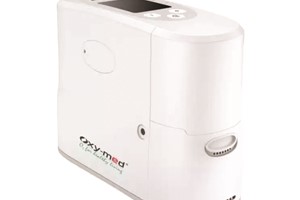Pulse oximeters and oxygen concentrators are essential tools in oxygen therapy, designed to address the critical need for adequate oxygen delivery to the body. These devices play a vital role in managing respiratory conditions, including asthma, chronic obstructive pulmonary disease (COPD), lung cancer, influenza, and COVID-19, which can reduce blood oxygen levels. However, their use requires careful adherence to medical guidance to avoid potential risks associated with improper operation.
Oxygen therapy involves increasing oxygen levels delivered to the body, often facilitated by oxygen concentrators. These medical devices filter nitrogen from the surrounding air, producing a continuous supply of concentrated oxygen. Unlike oxygen tanks, which store oxygen in a fixed capacity, concentrators utilize electric pumps to generate a steady flow. Due to their technical nature, oxygen concentrators are regulated as prescription-only devices to ensure they are used safely and appropriately.
Using an oxygen concentrator without proper medical oversight can result in serious health risks, including oxygen toxicity from excessive oxygen intake or delays in addressing underlying medical conditions. Even though oxygen comprises 21% of the atmosphere, prolonged exposure to high concentrations can cause lung damage. Conversely, insufficient oxygen, a condition known as hypoxia, can impair critical organs such as the brain, heart, and lungs. It is imperative that individuals consult a healthcare provider to determine if oxygen therapy is necessary, as well as to establish dosage and treatment duration.
Oxygen concentrators are commonly available in two configurations: stationary units for continuous use and portable models for increased mobility. While they are increasingly marketed online, the U.S. Food and Drug Administration (FDA) has not approved any oxygen concentrators for non-prescription use. To ensure operational safety, devices must be placed in well-ventilated areas to avoid overheating, and their vents must remain unobstructed to maintain performance. Additionally, these devices must be operated away from open flames or smoking to prevent fire hazards. Alarms and system indicators should be checked regularly to verify that oxygen delivery is functioning within prescribed parameters. Users experiencing changes in oxygen levels or respiratory symptoms should contact a healthcare provider immediately rather than attempt unauthorized adjustments to the device.
Monitoring oxygen levels at home is frequently accomplished with pulse oximeters, compact devices that measure oxygen saturation in the blood through light absorption technology. These devices, typically used on the fingertip, provide a noninvasive method for assessing blood oxygen levels. While they are useful tools, pulse oximeters are not without limitations and may yield inaccurate readings under certain conditions.
Factors that influence pulse oximeter accuracy include skin pigmentation, thickness, temperature, and circulation quality, as well as external factors such as tobacco use and the presence of fingernail polish. In 2021, the FDA issued a safety communication to address these limitations, emphasizing that pulse oximeter readings should not be solely relied upon for medical decisions.
To maximize accuracy, users must follow the manufacturer's operating guidelines and medical recommendations. The device should be applied to a warm, relaxed hand positioned below heart level, free from any nail polish or artificial nails. Readings should be recorded only after the display stabilizes, and results should be documented with corresponding date and time for proper tracking. This data, combined with observable symptoms, can aid healthcare providers in assessing and managing oxygen needs effectively.
Symptoms of low oxygen levels (hypoxia) may include bluish discoloration of the skin, lips, or nails; shortness of breath; worsening cough; chest pain or tightness; and increased heart rate. Some individuals may not exhibit noticeable symptoms despite having critically low oxygen levels, underscoring the importance of regular monitoring and medical consultation.
Any issues or adverse events related to pulse oximeters or oxygen concentrators should be reported through the FDA’s MedWatch program to ensure the safety and effectiveness of these devices.
Oxygen therapy represents a critical component of respiratory care, but its effective implementation requires strict adherence to medical protocols and proper use of prescribed equipment. Both oxygen concentrators and pulse oximeters are highly engineered devices designed for precision and safety. However, their benefits are contingent upon proper handling, maintenance, and supervision. By following professional guidance and adhering to operational standards, these tools can provide reliable, life-sustaining oxygen therapy for those in need.










